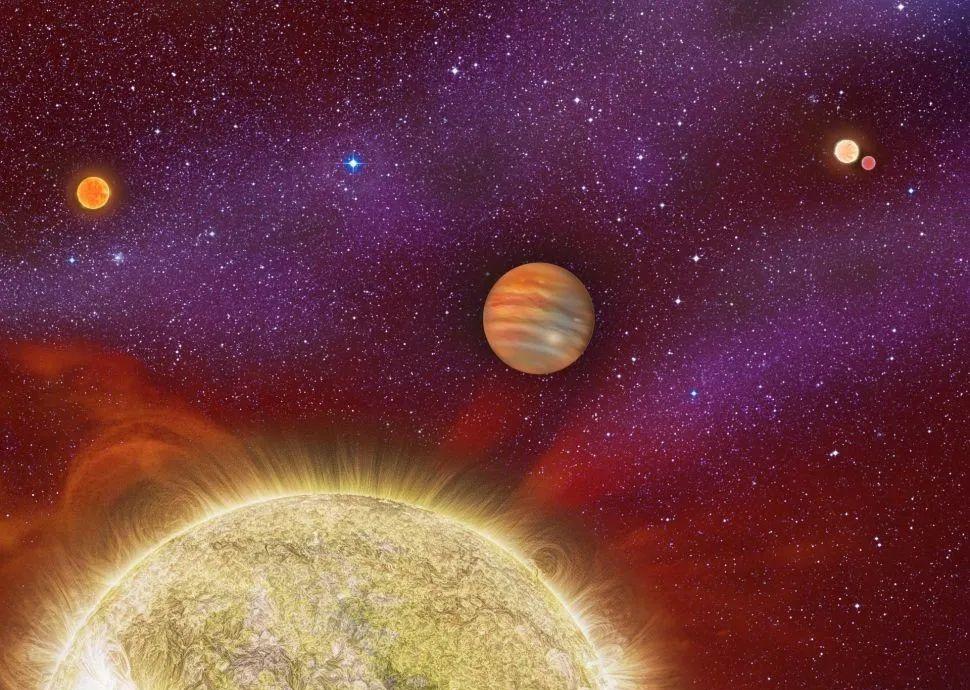There are billions of twinkling stars over the Earth at night, and ancient humans connected the dots of these stars together to form twelve constellations. Modern people always want to establish some connection between themselves and the zodiac signs, so what are your zodiac signs? What kind of cosmic wonders are hidden in your constellations?
Aries: The world of four suns

Exoplanet 30 Ari Bb Copyright: Karen Teramura, UH IfA
Aries likes to compete, and the exoplanet 30 Ari Bb in the constellation of Aries is no exception, with four suns in its sky at the same time, which is the only four-star system currently discovered by humans.
Taurus: Supernova graveyard
Crab nebula
There is a huge gaseous crab on the horn of Taurus, that is, the crab nebula, which is the remnant of a supernova explosion, and the gas produced by the explosion will linger in the sky for tens of thousands of years or more.
Gemini: The Great Clown in the Sky
Clown Face Nebula
Curious and interesting, gemini people are clown-faced nebulae that are clouds of gas within Gemini. The Joker Face Nebula, also known as the "Eskimo Nebula", is a planetary nebula made up of two huge concentric rings.
Cancer: Diamond World
Alien World 55 Cancri E
Cancer is home to a multitude of exoplanets, and in Cancer, just 40 light-years away from Earth, planet 55Cancri E is about twice as large as Earth, orbiting its star every 20 hours. This means that the surface of these planets is extremely hot, and even at night it indicates temperatures of thousands of degrees, and according to previous research, these exoplanets are made entirely of diamonds.
Leo: Runaway star
Runaway star Leo CW
The runaway star in the constellation Leo is as stubborn as a real lion, and it is trying to escape the region at a speed of 329,000 km/h. The star, called CW Leo, is about 310 light-years from Earth and moves so fast that it can be seen producing a bow-shaped shock (energy waves pushing interstellar matter to the side like the bow of a ship passing through water).
Virgo: The biggest hat in the universe
Straw Hat Nebula
It is difficult to see the hat-wearing black hole, Messier 104 in the constellation Virgo, often referred to as the Straw Hat Galaxy. This quirky galaxy is a bright star-like bump surrounded by perfectly symmetrical rings of dust reminiscent of the edges of a drafting cap. The dust acts as a huge nursery for baby stars, but the real hot spot is at the center of Straw Hat, where the black hole has a billion times the mass of the sun.
Is there your sign here? Tomorrow we continue to admire the other 6 constellations!